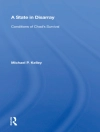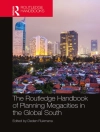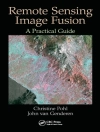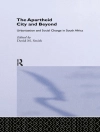This book explores state-of-art techniques based on open-source software and statistical programming and modelling in modern geospatial applications, specifically focusing on recent trends in data mining techniques and robust modelling in Geomorphological, Hydrological, Bio-physical and Social activities. The book is organized into physical, mountainous, coastal, riverine, forest, urban and biological activities, with each chapter providing a review of the current knowledge in the focus area, and evaluating where future efforts should be directed. The text compiles a collection of recent developments and rigorous applications of Geospatial computational intelligence (e.g., artificial neural network, spatial interpolation, physical and environmental modelling and machine learning algorithms etc) in geomorphic processes from a team of expert contributors. The authors address the wide range of challenges and uncertainties in the study of earth system dynamics due to climate change, and complex anthropogenic interferences where spatial modelling may be applied in the risk assessment of vulnerable geomorphological landscapes. The book will act as a guide to find recent advancements in geospatial artificial intelligence techniques and its application to natural and social hazards. This information will be helpful for students, researchers, policy makers, environmentalists, planners involved in natural hazard and disaster management, NGOs, and government organizations.
Inhoudsopgave
Chapter 1-Introduction: Anthropogeomorphology and Geospatial Technology.- Chapter 2-Geospatial Hydrometeorology.- Chapter 3-Remote Sensing Based Assessment of Water Management and Anthropogenic Process.- Chapter 4-Riverine Geomorphology Using Geospatial Technology & Anthropogenic Process.- Chapter 5-Coastal Geomorphology using RS and GIS and Anthropogenic Process.- Chapter 6-GIS based Study of Forest Ecology and Anthropogenic Process.- Chapter 7-Web GIS based Decision Support System for Agricultural Landscape and Anthropogenic Process.- Chapter 8-Satellite based Monitoring of Soil Erosion Mapping and Modelling and Anthropogenic activity.- Chapter 9-Geoinformatics for Urbanogenic Intervention and Anthropogenic Process.- Chapter 10-Industrogenic intervention and Anthropogenic Process.- Chapter 11-Anthropogenic Process and Montanogenic Intervention: Geospatial Information Based Study.- Chapter 12-Application of Geospatial Technology on Tourism activity and Anthropogenic impact.
Over de auteur
Dr Gouri Sankar Bhunia is working in Randstad India Private Limited, New Delhi, India. He received a Ph.D. from the Department of Geography, University of Calcutta, India in 2015. He also worked as a visiting Faculty in Private University, West Bengal, India. His Ph.D. dissertation work focused on environmental control measures of infectious disease using Geospatial technology. Currently, he is involved in Smart city and urban planning project. He has received Senior Research Fellowship Award from Indian Council of Medical Research. His research interests include environmental modelling, Health GIS, risk assessment, natural resources mapping and modelling, data mining and information retrieval using Geospatial technology. Dr Bhunia is associate editor and on the editorial boards of three international journal in Health GIS and Geosciences. Dr. Bhunia has published more than 80 articles in various journals in Scopus indexed. He published four books with International Publishing Group. He is currently the editor of the GIScience and Geo-environmental Modelling (GGM) Book Series, Springer-Nature.
Dr. Uday Chatterjee is an Assistant Professor at the Department of Geography, Bhatter College, Dantan, Paschim Medinipur, West Bengal, India and Applied Geographer with a Post-Graduate in Applied Geography at Utkal University and Doctoral Degrees in Applied Geography at Ravenshaw University, Cuttack, Odisha, India. He has contributed various research papers published in various reputed national and international journals and edited book volumes. He has authored jointly edited book entitled ‘Harmony with nature: Illusions and elusions from Geographer’s perspective in the 21st Century’. He has also conducted (Convener) one Faculty Development Programme on ‘Modern methods of teaching and advanced research methods’ sponsored by Indian Council of Social Science Research (ICSSR), Govt. of India. His areas of research interest cover Urban Planning, Socialand Human geography, Applied Geomorphology, Hazards & Disasters, Environmental Issues, Land Use and Rural Development. His research work has been funded by the West Bengal Pollution Control Board (WBPCB) Govt. of West Bengal, India. He has served as a reviewer for many International journals. Currently Dr. Uday Chatterjee is the lead editor of Special Issue (S.I) of Urbanism, Smart Cities and Modelling, Geojournal, Springer.
Dr. K.C. Lalmalsawmzauva, graduated from St. Edmund’s College, Shillong, Meghalaya and pursued MS.C Geography from North Eastern Hill University and awarded Doctorate Degree (Ph.D.) from the same University in 2012. He was the founder President of NEHU-Geographical Research Forum (NEHU-GRF). He joined Mizoram University in 2011 as an Assistant Professor. He has published three books as a single author, co-authored four books, and has completed projects from the Indian Council of Social Science research (ICSSR). He is involved in the project of United Nations- Food and Agriculture Organization (FOA) for agricultural development in the hill regions. He is also Co-PI in the consultancy project of National Rural Livelihood Mission project, Government of Mizoram. Dr Pravat Kumar Shit is an Assistant Professor at the PG Department of Geography, Raja N. L. Khan Women’s College (Autonomous), West Bengal, India. He received his M.Sc & Ph.D. degrees in Geography from Vidyasagar University and PG Diploma in Remote Sensing & GIS from Sambalpur University. His research interests include applied geomorphology, soil erosion, groundwater, forest resources, wetland ecosystem, environmental contaminants & pollution, and natural resources mapping & modelling. He has published ten books (eight books in Springer) and more than 60 papers in peer-reviewed journals. He is currently the editor of the GIScience and Geo-environmental Modelling (GGM) Book Series, Springer-Nature.












